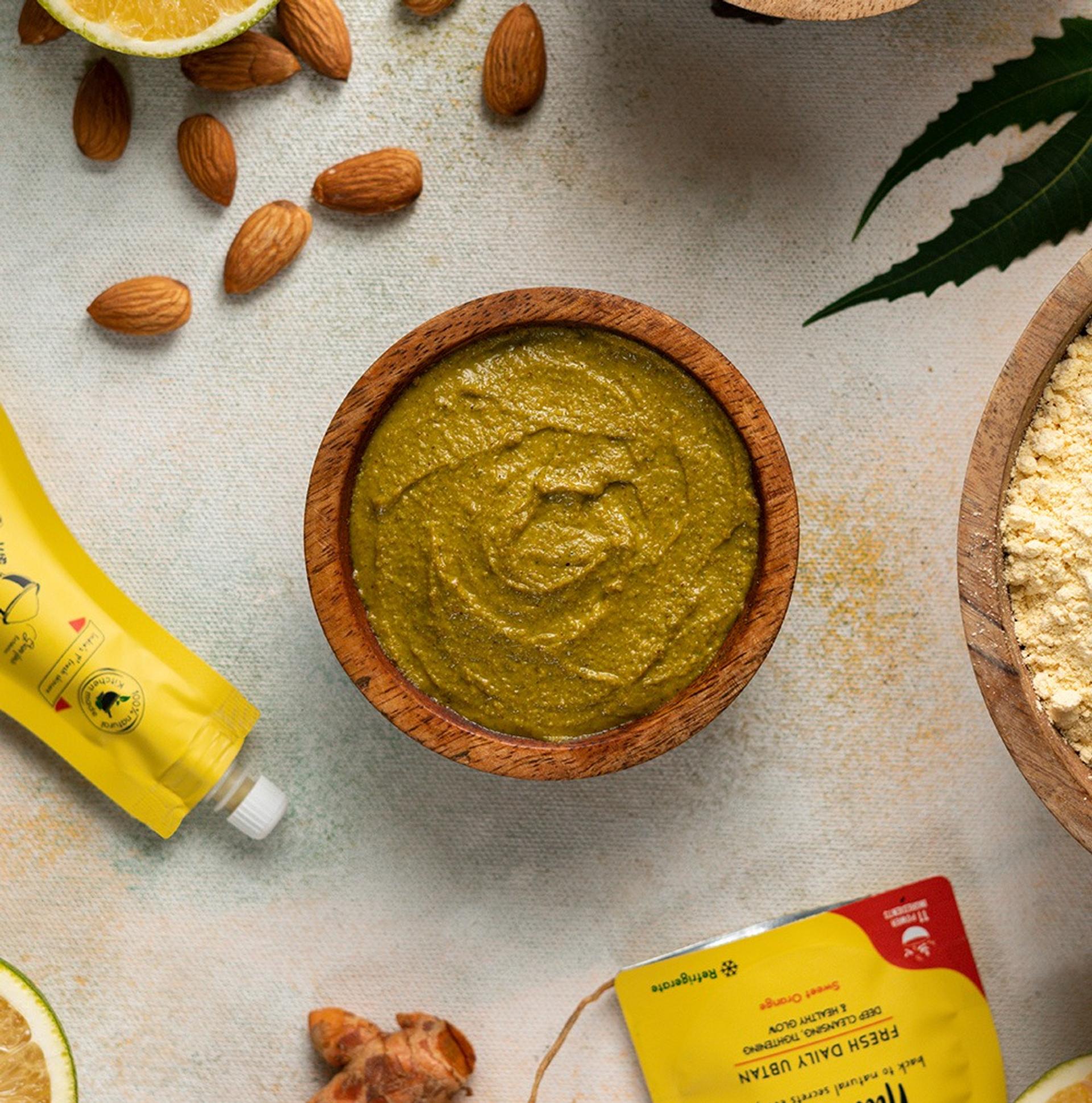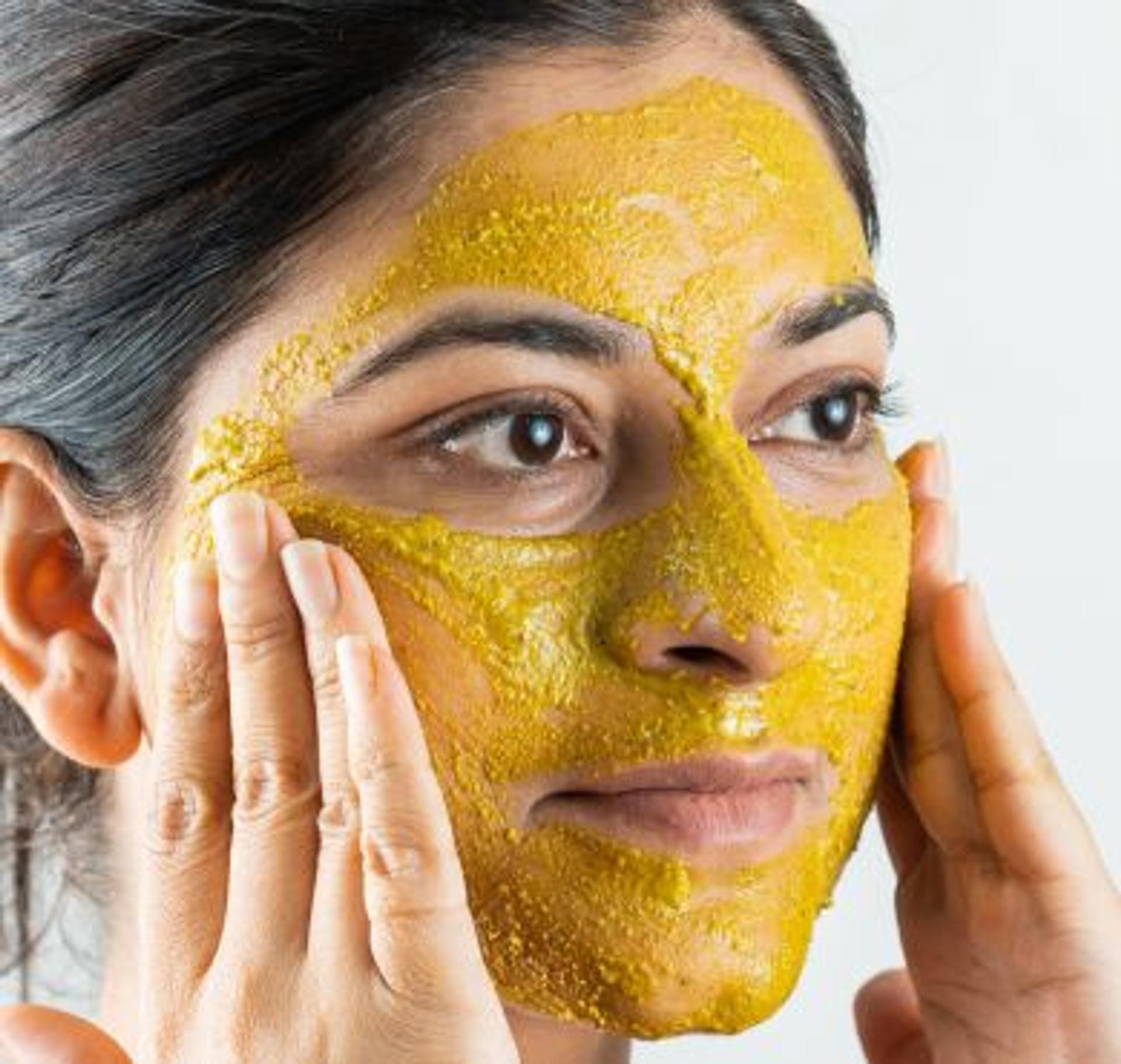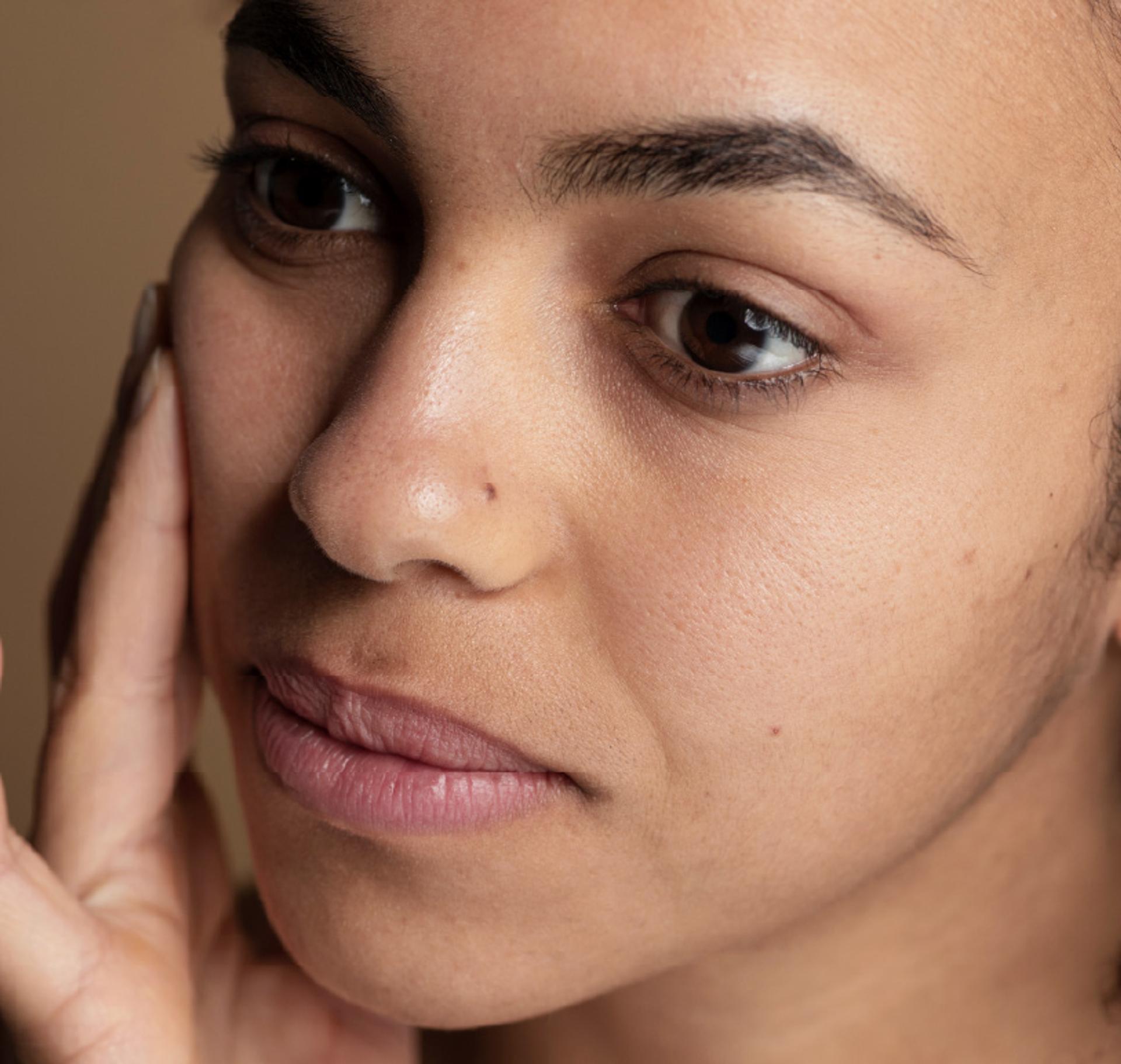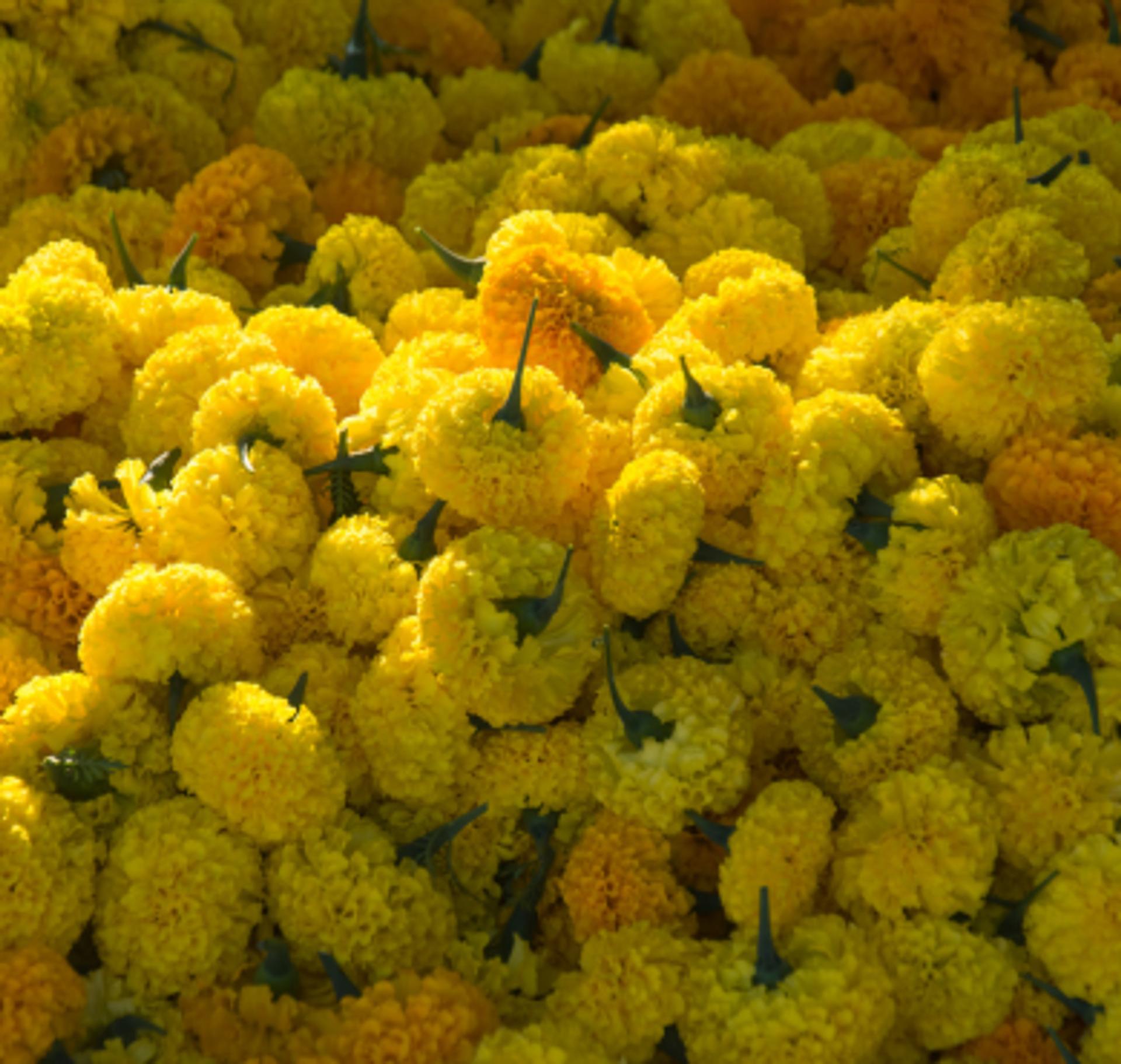
Sun in a Flower: Marigold’s Bioactive Power for Skin Recovery & Radiance
By Nat Habit
This is a winter glower. A Diwali staple. An easy-to-grow companion in your mother’s garden.
But did you know — it’s not even a flower? At least, not just one.
That bright, sunshine ball of petals we call marigold is actually a cluster of tiny florets, each packed with medicinal compounds that detoxify, soothe, regenerate and repair — from wounds to wrinkles.
And while you’ve strung it around doorways or tossed it in puja thalis, modern skin science is now stringing marigold into wound-healing creams, anti-inflammatory oils, antioxidant serums, and anti-pigmentation rituals. Let’s unfurl the petals of this festive bloom and discover why it deserves a permanent place not just on your doorstep — but on your skin.
What’s Inside Marigold
The Biochemistry of Bloom & Barrier Repair
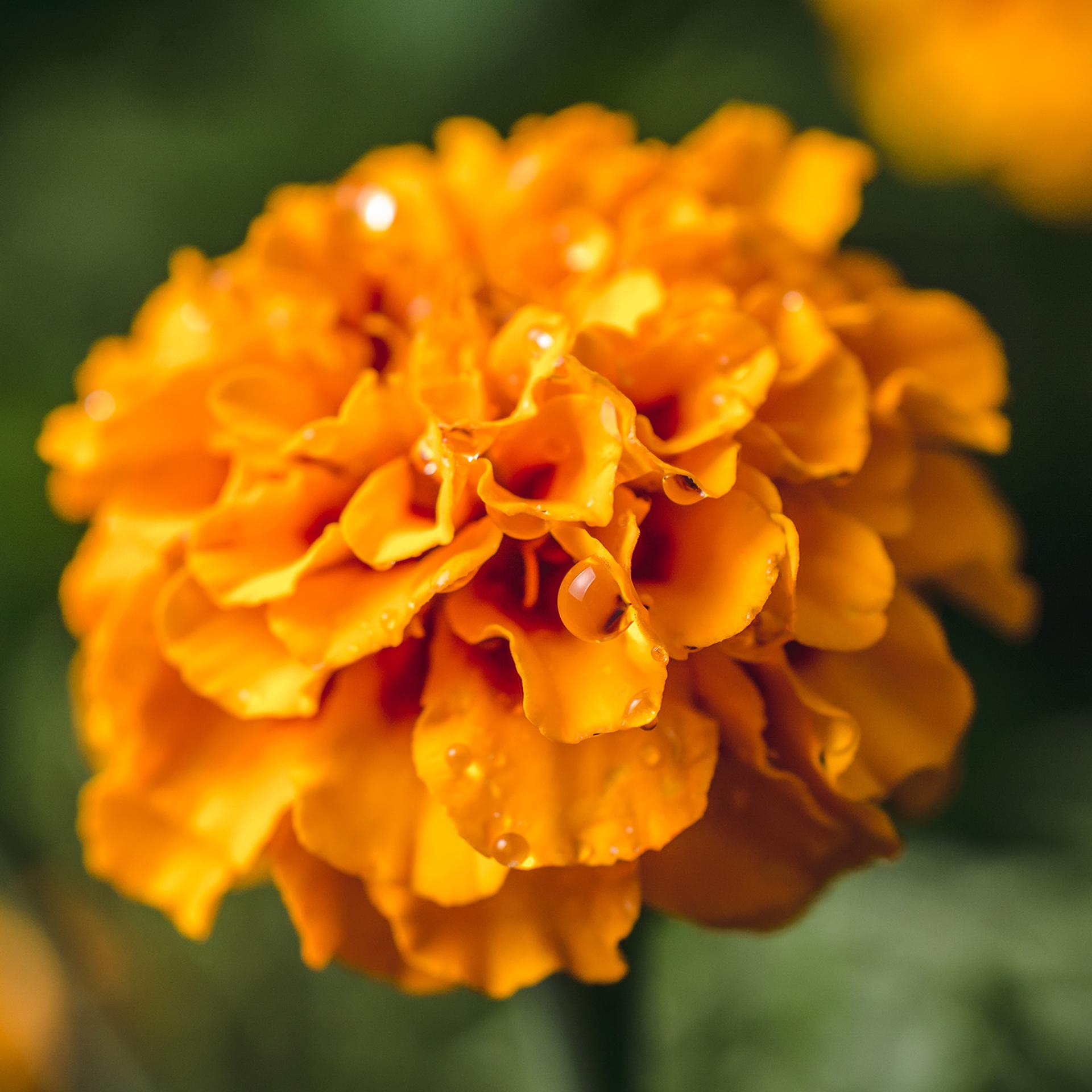
Marigold is a floral apothecary — rich in carotenoids, triterpenoids, flavonoids, polysaccharides, saponins, and essential oils, each contributing to skin, scalp, and systemic harmony.
Lutein & Zeaxanthin (Xanthophyll Carotenoids)
These yellow pigments:
- Absorb blue light and UV radiation, protecting deeper skin layers
- Act as potent antioxidants at the mitochondrial level
- Improve skin brightness and light reflection when consumed or applied
Triterpenoids (Faradiol Esters, Lupeol)
These lipid-like compounds:
- Exhibit powerful anti-inflammatory action by inhibiting COX and LOX enzymes
- Accelerate fibroblast proliferation, aiding collagen repair
- Reduce erythema, swelling, and sensitivity
Flavonoids: Quercetin, Isorhamnetin, Rutin
These polyphenols:
- Modulate inflammatory cytokines
- Support capillary strength and microcirculation
- Help fade post-inflammatory hyperpigmentation
Polysaccharides (Calendulin)
Natural humectants that:
- Form a moisture-binding matrix on skin
- Soothe burns, dryness, and damaged barriers
- Stimulate epithelial regeneration
Volatile Oils: Limonene, Caryophyllene
These aromatic compounds:
- Offer antibacterial, antifungal, and antiseptic action
- Reduce scalp infections, eczema triggers, and itch cycles
Marigold for Skin
The Petal That Rebuilds, Brightens & Balances

Marigold is one of the few botanicals that acts across all four phases of skin damage — inflammation, oxidation, infection, and poor repair.
Soothes Inflammation & Sensitivity
Triterpenes and flavonoids work synergistically to reduce redness, swelling, and irritation — making marigold ideal for rosacea, eczema, dermatitis, and sunburn. It gently turns off inflammatory cascades without disrupting the skin’s microbiome.
Speeds Up Healing & Collagen Repair
Marigold enhances fibroblast activity, angiogenesis, and collagen matrix rebuilding, making it ideal for use post-acne, post-procedure, or on slow-healing scars and cuts.
Restores Moisture Barrier
The calendulin polysaccharides create a biofilm-like layer on the skin that retains hydration, prevents TEWL, and promotes skin smoothness — especially effective in cold, dry winter air.
Protects Against UV & Blue Light
When used topically or consumed in extract form, lutein and zeaxanthin help reduce photoaging, boost skin clarity, and counteract pollution damage, particularly in urban settings.
Fades Post-Acne Pigmentation
With regular use, marigold’s quercetin and flavonoids help lighten dark marks, prevent melanin overproduction, and improve overall tone evenness.
Marigold for Hair & Scalp
The Anti-Itch, Anti-Fall Flower

Calms Itchy, Inflamed Scalps
Marigold extracts cool the scalp, reduce microbial overgrowth, and calm histamine reactions, making it excellent for psoriasis, dandruff, and sensitivity.
Stimulates Follicle Recovery
By improving microcirculation and reducing oxidative stress, marigold supports hair regeneration, especially in reactive hair fall caused by inflammation or product damage.
Adds Natural Shine & Smoothness
When used in hair masks or rinses, marigold smooths the cuticle, enhances light reflection, and adds a natural golden softness to strands — especially visible in sunlit winter hair.
How to Use Marigold
Forms & Activation Methods
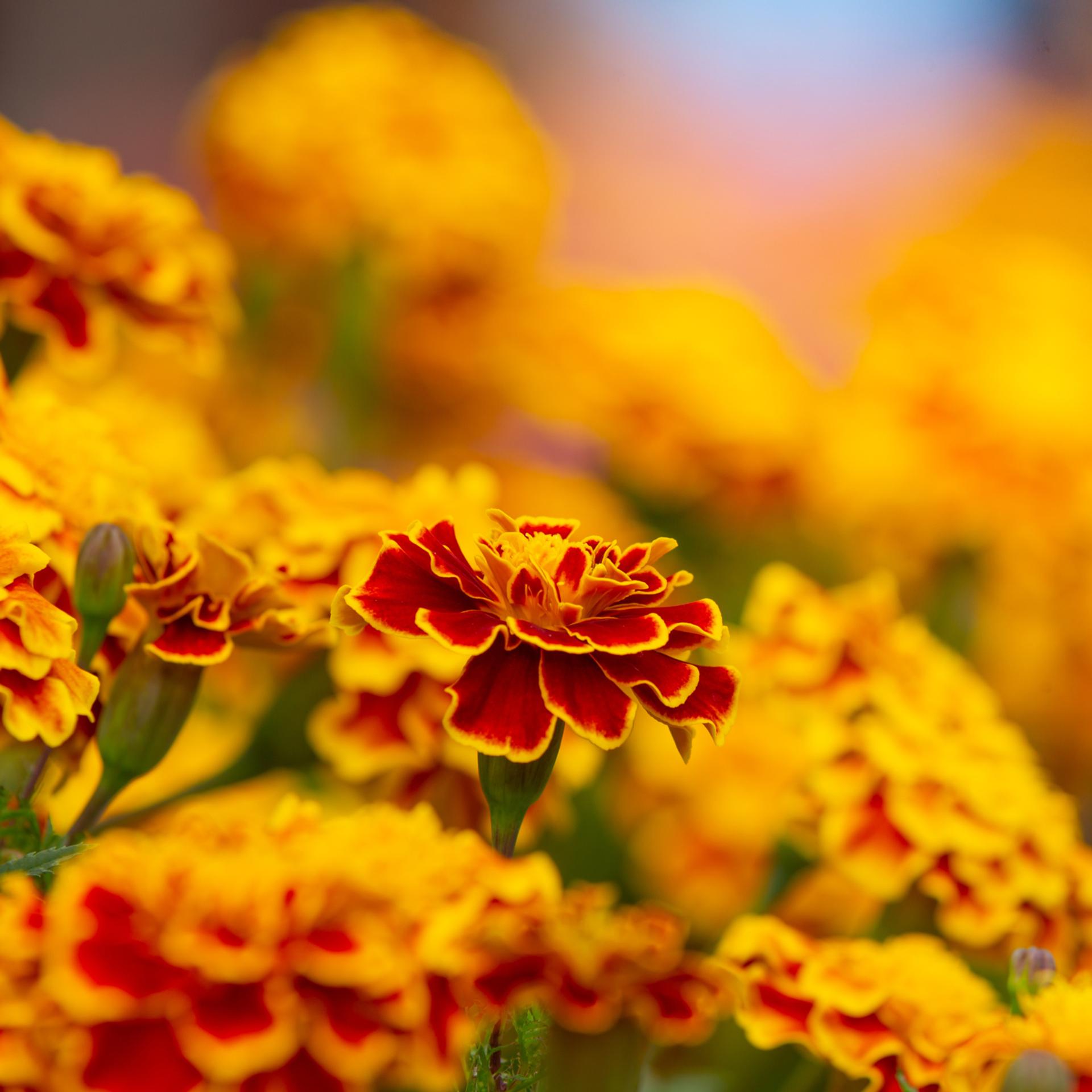
- Marigold Infused Oil: Apply to skin post-wash or use as a scalp soother.
- Marigold Paste + Aloe Vera: For calming masks that treat redness, heat rashes, or irritation.
- Floral Water Mist: A gentle anti-inflammatory toner for daily barrier support.
Seasonal Intelligence
Marigold Is a Winter Hero
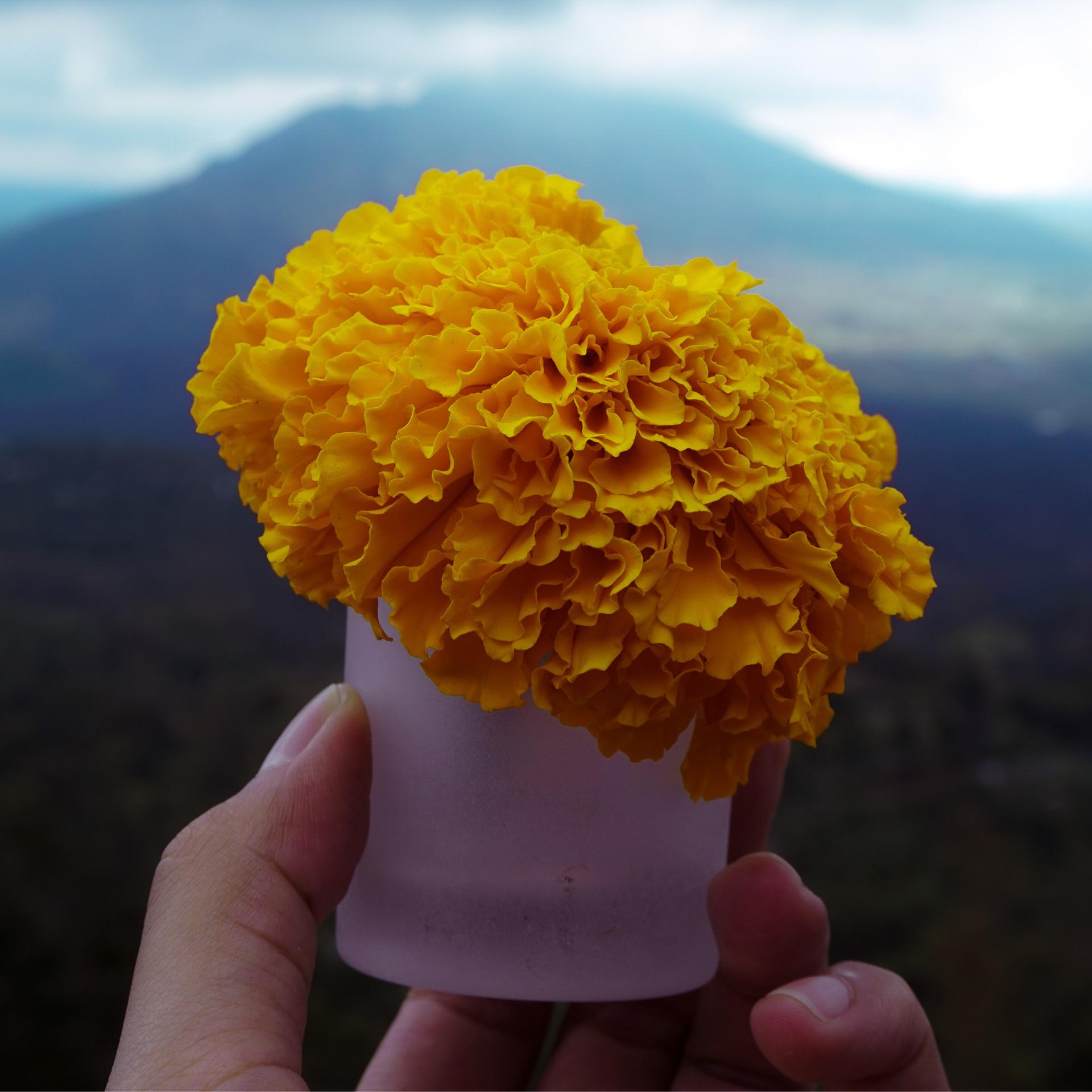
- Winter: Peak time to use — hydrates skin, supports immune defense, prevents cold-triggered flares.
- Summer: Use diluted — its heaty nature can aggravate pitta, unless buffered with cooling herbs like mint or rose.
- Monsoon: Protects against fungal flare-ups, eczema, and scalp infections — ideal as oil infusion or hair rinse.
The Final Petal
From Puja Phool to Skin’s Silent Protector
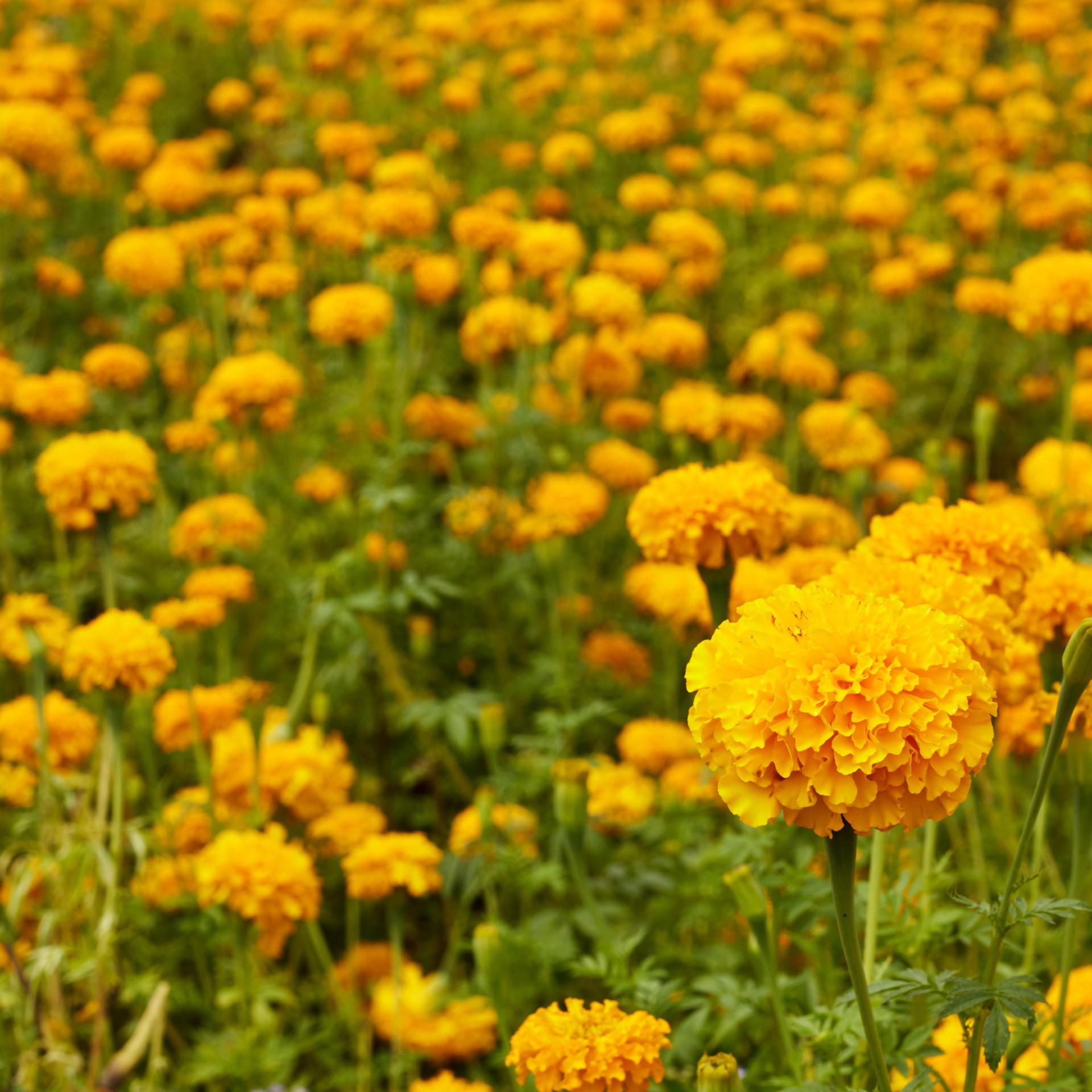
It sat quietly in your Diwali garlands, crumbled under temple bells, bloomed in winter pots. But marigold was never just decoration. It was always a pharmacological flower — ready to protect, restore, and illuminate your skin barrier and scalp health.
So don’t just string it.
Steep it. Apply it. Let it bloom beneath your skin.
This winter, let marigold be more than memory — let it be medicine.
Learn more
